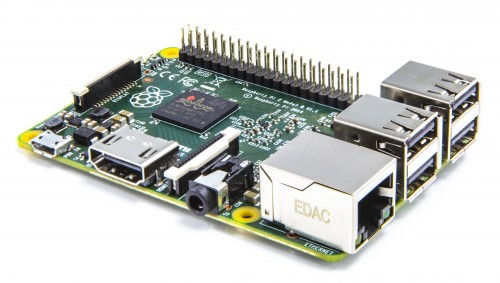| Raspberry Pi 2 - Quad Core And Runs Windows |
| Written by Harry Fairhead | |||
| Monday, 02 February 2015 | |||
|
The latest Raspberry Pi provides a new level of computer power for the same $35 price tag as the existing models. It really does change things. The new Raspberry Pi 2 is the same as the recently upgraded Model B+, but it has a 900MHz quad-core ARM Cortex A7 CPU and 1GByte of RAM.
The upgrade to the CPU mitigates the main complaint everyone had about the Pi - it's cheap but slow. Even so this hasn't stopped people using the Pi for servers, embedded devices, media players and general IoT projects. However, you had to work hard to optimize and sometimes the speed just wasn't up to it. Now you can pay the same price but obtain a lot more power. It is claimed that the new Pi is six times faster than the old, but comparing a single core to a quad core machine isn't an easy task. It more than likely turns in a performance that is 3 to 4 times the speed of the original - but at the same price who is going to complain? Almost as important is the fact that this is an A7 processor. The original Pi used an A6, which was no longer supported by many software distributions. Now with an A7 you can run Ubuntu, Debian and even an ARM version of Windows 10. As a very minor downside you need to use an A7 kernel for Linux and this means you have to use a different version of Raspbian. It also brings into question the future of having a special Linux distribution for the Pi as now you can simply use the standard Debian rather than the customized Raspbian. Also with 1GByte of RAM it will be able to run more. For a Linux machine 1GByte is a very reasonable memory size. The point is that the new Pi 2 is a modern ARM Linux machine. Perhaps the biggest shock is that Microsoft is going to bring an IoT version of Windows 10 to the Pi 2 - and for free. What impact this will really have depends a lot on what Windows 10 for IoT looks like. You can bet that it isn't going to be a full version of Windows. The standard model B and B+ will continue while demand exists, just in case people really need the old model. I can't see this continuing for long as there is no obvious disadvantage of the new system There seem to be no plans for a model A 2 for the near future, but an upgrade to the Compute Module should be released soon. It is difficult to underestimate the effect that the Pi 2 could have. It effectively makes the cost of a capable desktop PC $35, plus keyboard, mouse and monitor. It makes dedicated servers possible for the same sort of price. And when it comes to IoT devices such as the Arduino, Galileo, Edison and so on it is going to be increasingly hard to find reasons for preferring them. So what are the drawbacks of the Pi? The biggest is the lack of any fast I/O. The Pi only has USB 2 and if you want to do anything like build a Pi-based NAS then you need something faster. It is also lacks WiFI and Bluetooth connections but both can be added via USB. From an IoT point of view, its biggest lack is any analog I/O but again these can be provided via expansion cards. This situation would be easier to work with if the Raspberry Pi Foundation made, or recommended, standard expansion cards for these most common options. , The final problem is that the Pi uses too much power to make battery operation easy. It can be done but it takes a big battery and regular recharging. The Raspberry Pi 2 is compatible with the Model B and B+ expansion cards. Is this going to continue the success of the Pi? Of course. Now if you have a problem, you can afford to throw hardware at it until it is solved.
More InformationRaspberry Pi 2 On Sale For $35 Related ArticlesExploring Edison - Meet Edison Astro Pi - What Can A Raspberry Pi Do In Space? Is This What It Now Means To Build A Computer? Buy A Pi For $25 And Get Mathematica Free Raspberry Pi To Star In Class? Raspberry Pi Gets A $25 Camera Raspberry Pi Photo Competition Results Are Stunning
To be informed about new articles on I Programmer, install the I Programmer Toolbar, subscribe to the RSS feed, follow us on, Twitter, Facebook, Google+ or Linkedin, or sign up for our weekly newsletter.
Comments
or email your comment to: comments@i-programmer.info |
|||
| Last Updated ( Monday, 02 February 2015 ) |



